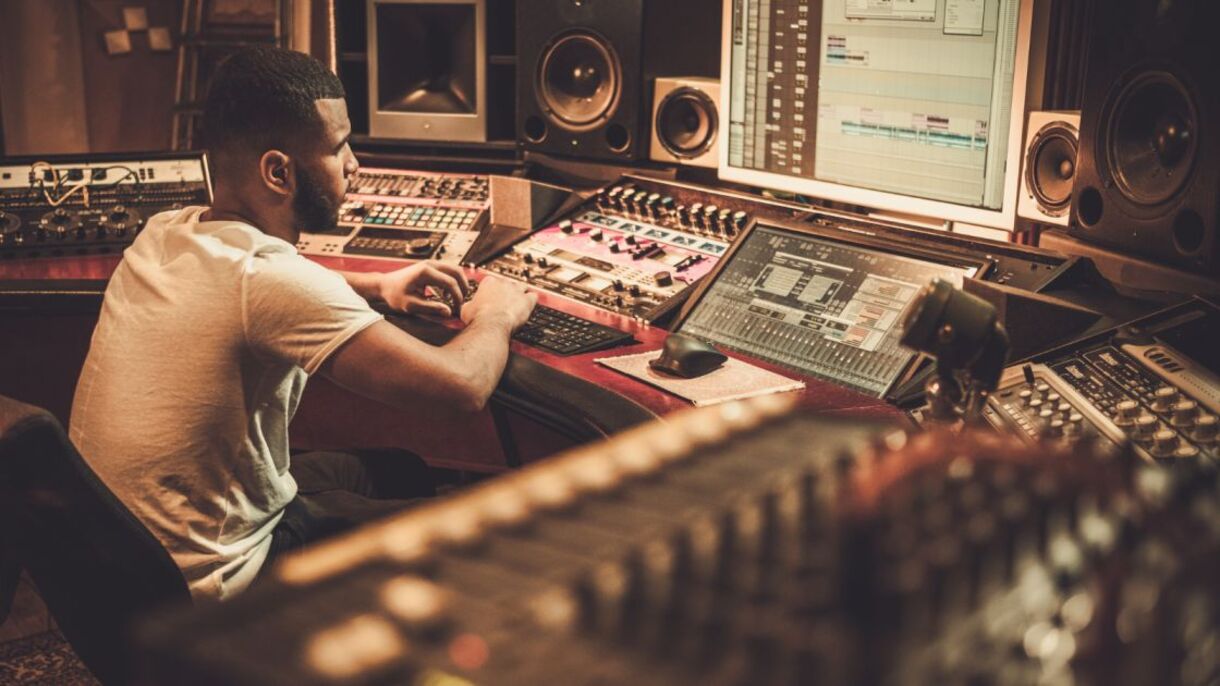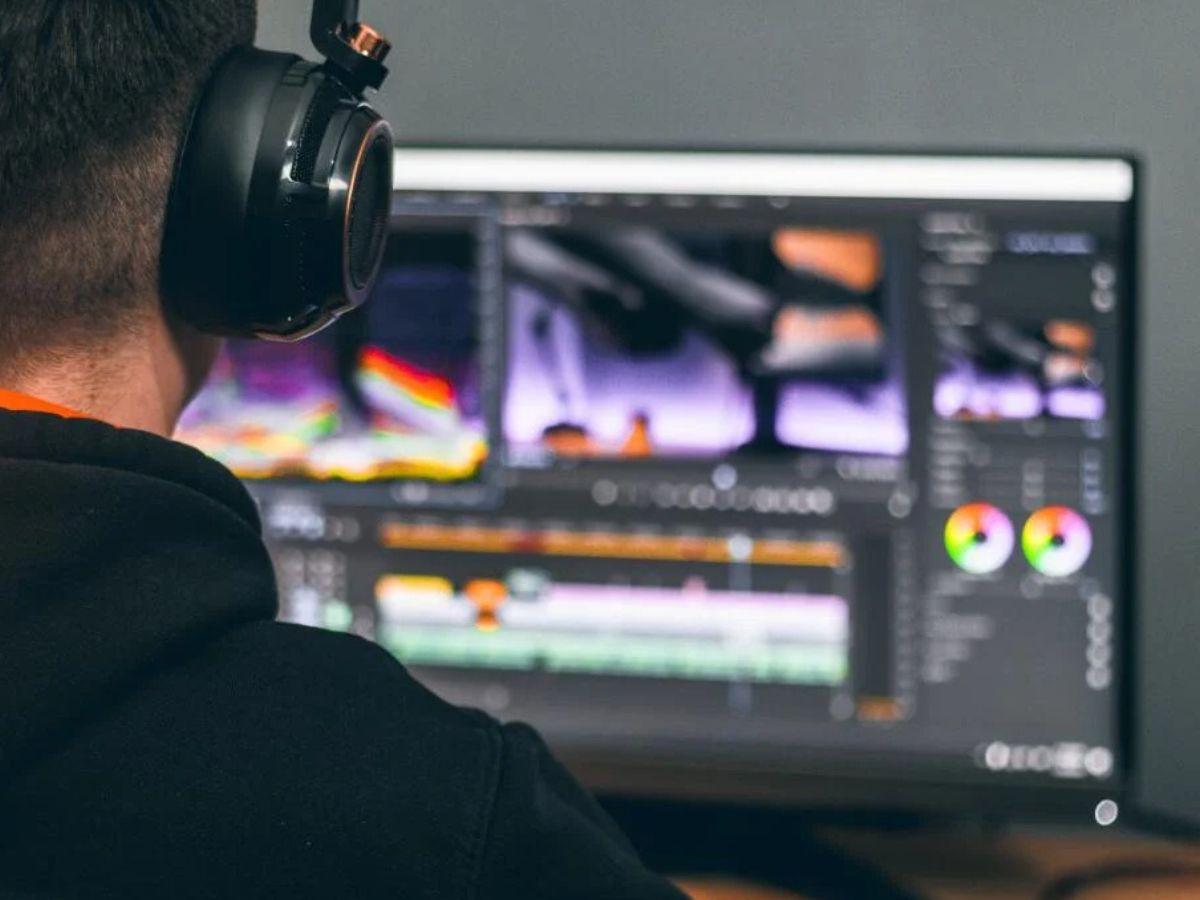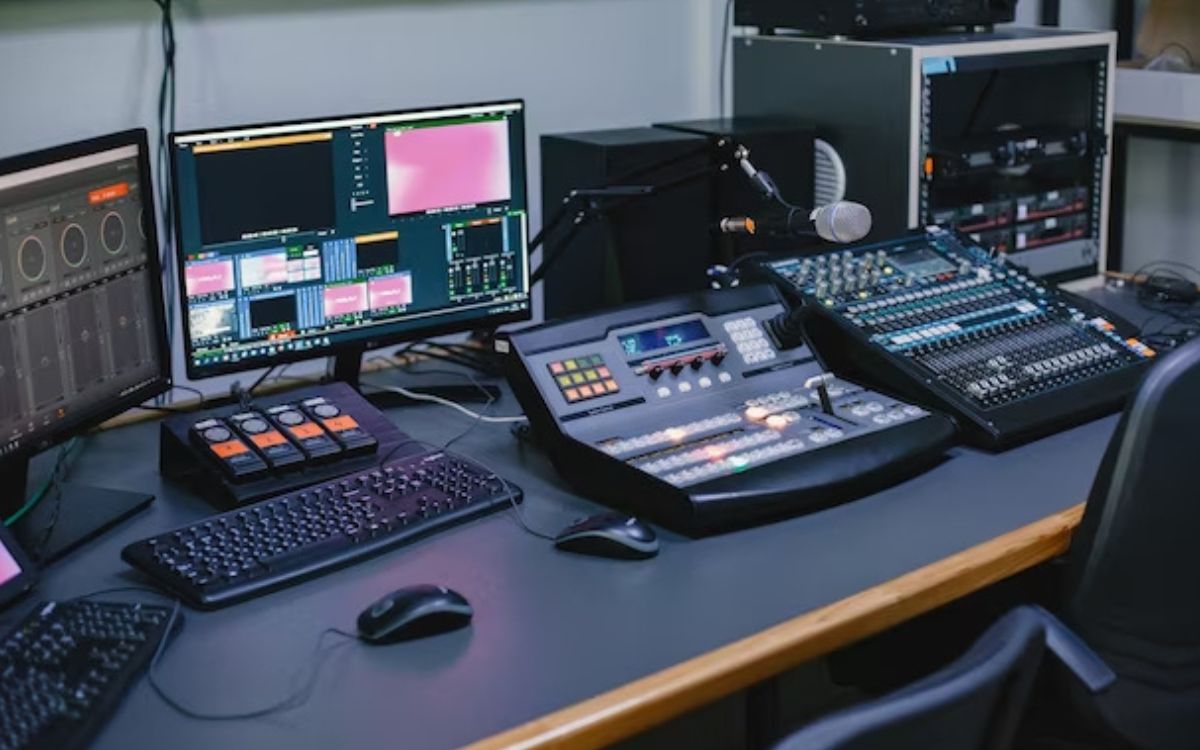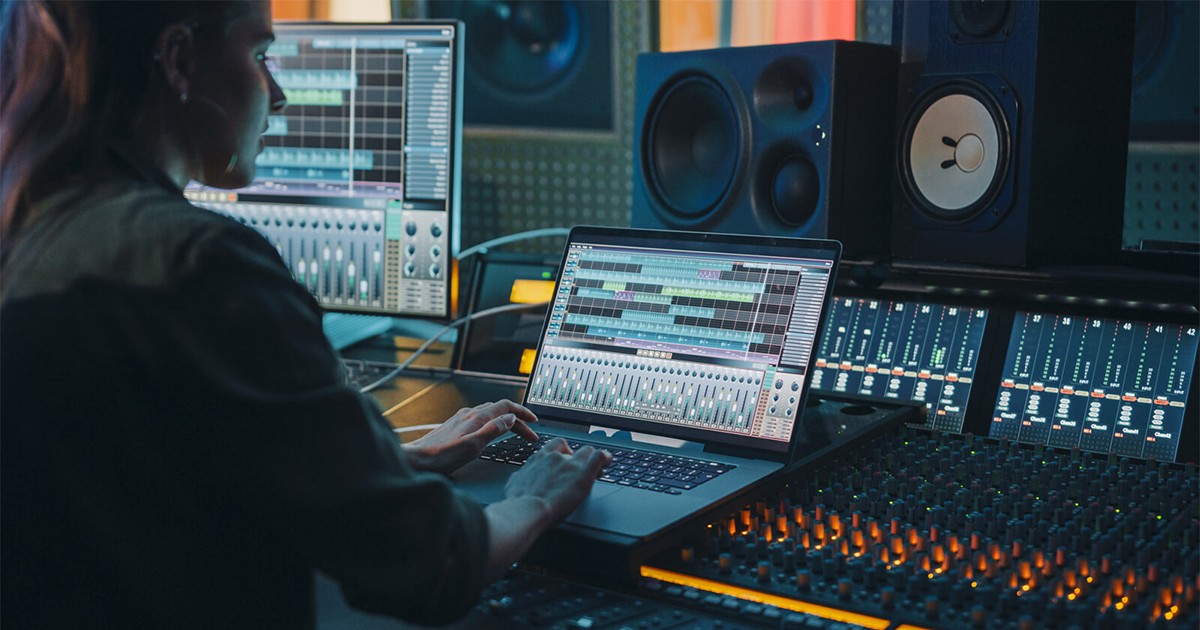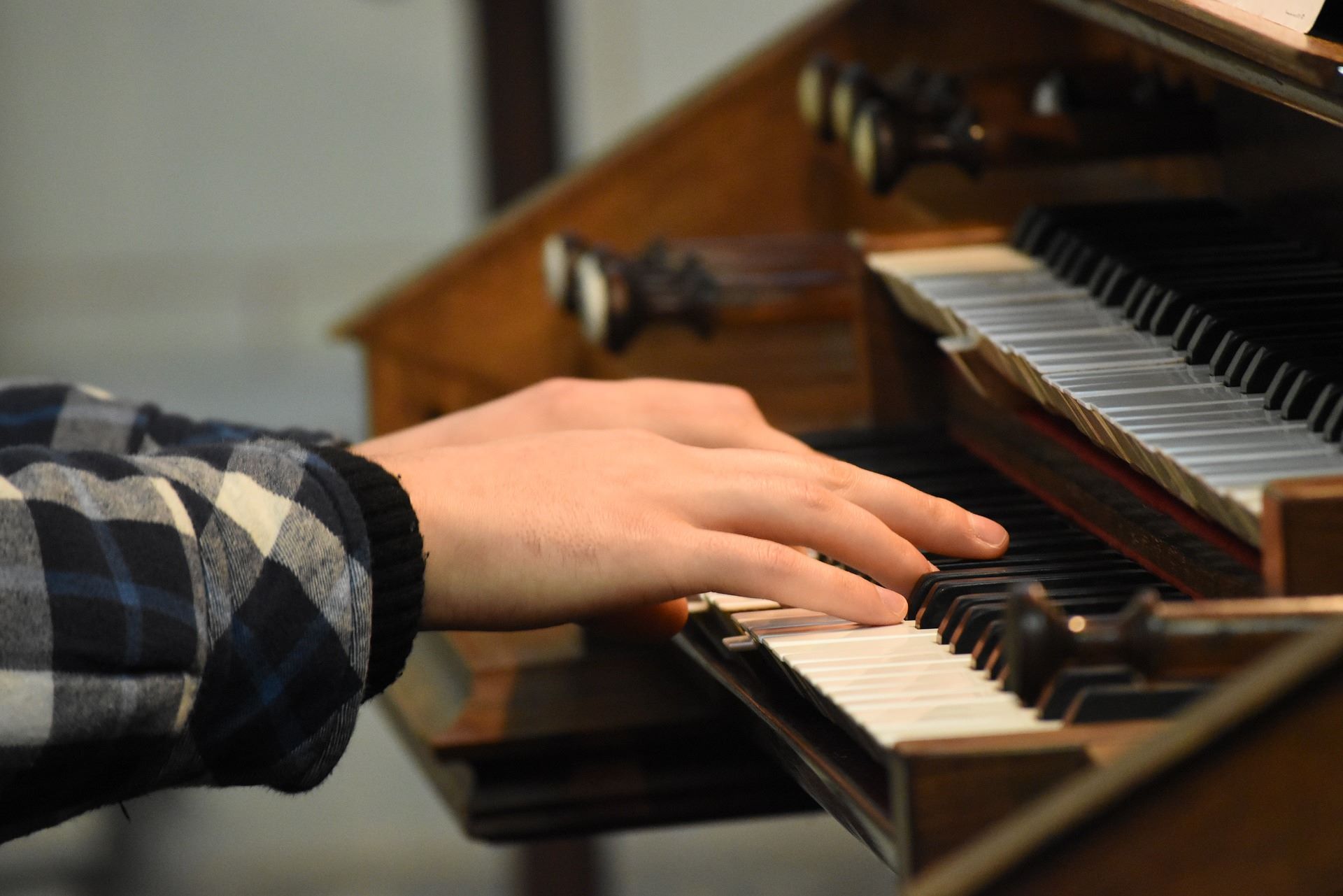Home>Genres>Reggae>How To Do The Bubble Organ Effect In Reggae
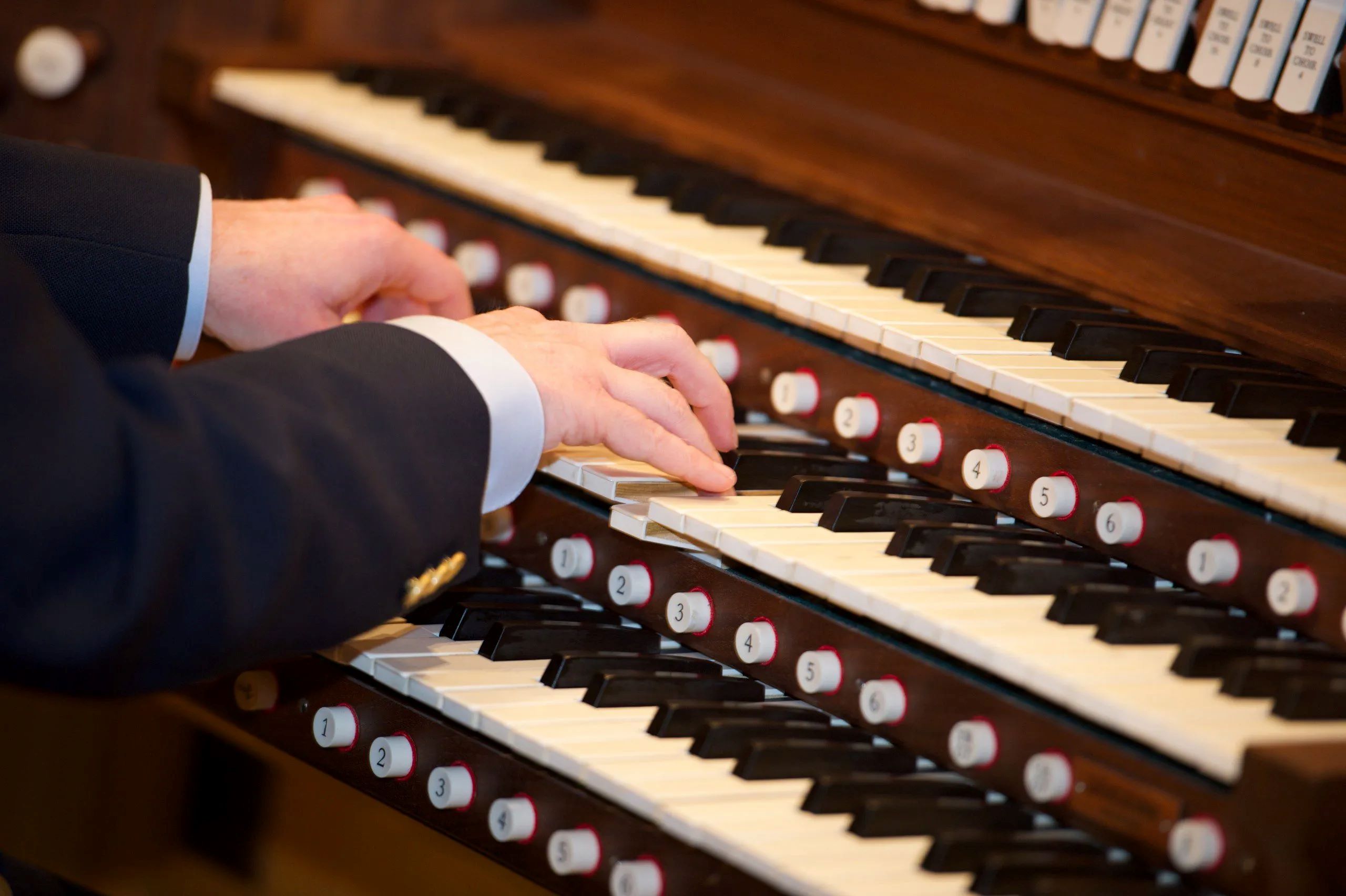

Reggae
How To Do The Bubble Organ Effect In Reggae
Modified: February 15, 2024
Learn how to create the captivating bubble organ effect in reggae music with our step-by-step guide. Master this signature technique to enhance your reggae productions and achieve that authentic sound.
(Many of the links in this article redirect to a specific reviewed product. Your purchase of these products through affiliate links helps to generate commission for AudioLover.com, at no extra cost. Learn more)
Table of Contents
Introduction
Welcome to the world of reggae music, where the pulsating rhythms and soulful melodies create a unique and captivating sound. Within this genre, there are various techniques and effects that contribute to the iconic reggae sound. One such effect is the Bubble Organ, which adds depth and texture to the music.
The Bubble Organ effect is a rhythmic technique commonly used in reggae music to emulate the sound of a Hammond organ. It creates a pulsating, bouncy feel that adds a distinct character to the overall sound of the music. This effect is achieved by employing specific fingering patterns, palm muting, and syncopated rhythms on a keyboard or guitar.
In this article, we will explore how to recreate the Bubble Organ effect in reggae music. We will discuss the equipment needed, setting up your instrument, and introduce various techniques and tricks to master this effect. So, whether you’re an aspiring reggae musician or simply interested in the intricacies of reggae music, read on to discover how to create the mesmerizing Bubble Organ effect.
What is the Bubble Organ Effect?
The Bubble Organ effect is a signature sound in reggae music that emulates the distinct sound of a Hammond organ. It is characterized by a pulsating, rhythmic pattern that adds depth and movement to the music. This effect became popular in the 1960s and 1970s, particularly in the music of reggae legends like Bob Marley and The Wailers.
The Bubble Organ effect is typically achieved through various techniques, depending on the instrument being used. On a keyboard or synthesizer, it involves creating a rhythmic pattern by rapidly and alternately playing two or more adjacent notes with the same hand. This creates a bouncing, organ-like sound that mimics the pulsating effect of an actual organ.
On a guitar, the Bubble Organ effect can be achieved by palm muting the strings while strumming in a syncopated rhythm. This dampens the strings, creating a percussive and rhythmic sound that simulates the bubble-like effect of an organ.
The Bubble Organ effect is often used in reggae music to create a hypnotic and lively sound that complements the genre’s distinct rhythm and groove. It is particularly prominent in the ska and rocksteady subgenres of reggae, adding a layer of texture and energy to the music.
By incorporating the Bubble Organ effect into your reggae music, you can elevate the overall sound and give it a unique touch. Whether you’re playing solo or as part of a band, mastering this technique can unlock a world of possibilities and help you capture the true essence of reggae music.
Equipment Needed
To achieve the Bubble Organ effect in reggae music, you’ll need specific equipment depending on the instrument you’re using. Here’s a breakdown of the necessary equipment for different instruments:
- Keyboard or Synthesizer: If you’re using a keyboard or synthesizer, you’ll need a reliable instrument with a good selection of organ sounds. Look for keyboards that have built-in organ presets or features that allow you to create organ-like tones. Make sure the instrument has velocity-sensitive keys for dynamic playing.
- Guitar: For guitarists, a standard electric or acoustic guitar will suffice. However, it’s recommended to use an electric guitar for better control and customization of the sound. Additionally, you may want to invest in a quality amp and effects pedals such as distortion, delay, and reverb to enhance the Bubble Organ effect.
- Amplifier: Regardless of the instrument, a good amplifier is essential to properly amplify and shape the sound. Look for an amplifier that provides clean, crisp tones and has EQ controls to adjust the sound to your liking.
- Cables: Ensure you have high-quality instrument cables to connect your instrument to the amplifier. Using reliable cables will minimize signal loss and interference, resulting in a cleaner sound.
- Optional Accessories: While not strictly necessary, there are a few accessories that can enhance your experience with the Bubble Organ effect. These include a sustain pedal for keyboards to sustain notes and a guitar strap for added comfort during extended playing sessions.
Remember, the equipment you choose should align with your personal preferences and budget. Focus on finding instruments and accessories that suit your style of play and allow you to achieve the desired Bubble Organ effect in your reggae music.
Setting Up Your Instrument
Before you start incorporating the Bubble Organ effect into your reggae music, it’s important to properly set up your instrument. Whether you’re using a keyboard or a guitar, here are some crucial steps to follow:
- Tuning: Ensure that your instrument is properly tuned. This will ensure that you’re playing in the right key and that the notes sound harmonious when combined with the Bubble Organ effect.
- Volume and Tone Controls: Adjust the volume and tone controls on your instrument and amplifier. Experiment with different settings to find the right balance that allows the Bubble Organ effect to shine through without overpowering the rest of the music.
- Effect Settings: If you’re using an instrument with built-in effects or using effects pedals, set the parameters accordingly. Adjust the level of distortion, delay, or other effects to create the desired texture and intensity for the Bubble Organ effect.
- Positioning: Position yourself comfortably in front of your instrument. Maintain good posture and ensure that your hands are properly positioned on the keys or the guitar neck. This will prevent any unnecessary tension or discomfort while playing.
- Palm Muting Technique: For guitarists, practice the palm muting technique. Rest the edge of your palm lightly on the strings near the bridge to dampen the sound while still allowing for a percussive effect. Experiment with the amount of pressure applied to achieve the desired Bubble Organ sound.
- Fingering Patterns: On the keyboard, practice the fingering patterns required to create the Bubble Organ effect. Experiment with alternating between two or more adjacent keys rapidly to achieve the bouncing, organ-like sound.
Remember to take your time and experiment with different settings and techniques to find the right setup for your instrument and playing style. Each musician may have their own preferences, so don’t be afraid to customize the setup to suit your personal taste and desired Bubble Organ sound.
Technique 1: Fingering Patterns
One of the key techniques for creating the Bubble Organ effect in reggae music is the use of specific fingering patterns on the keyboard. By rapidly alternating between two or more adjacent keys, you can create the rhythmic and bouncy sound reminiscent of an organ. Here’s how to master the fingering patterns:
- Start with Two Keys: Begin by selecting two adjacent keys on your keyboard. These could be two white keys or a white key and a black key depending on the specific sound you’re aiming for. For example, you might choose C and D or D and E.
- Alternate Rapidly: With your preferred fingers, start alternating rapidly between the two selected keys. Aim for a consistent and even rhythm, keeping the notes evenly spaced and distinct. This will create the bouncing effect characteristic of the Bubble Organ sound.
- Experiment with Patterns: As you become comfortable with the basic two-key pattern, feel free to experiment with different patterns. Try incorporating additional adjacent keys or expanding the range of your alternating fingers. This will add complexity and variation to your Bubble Organ effect.
- Practice Control and Speed: Focus on maintaining control and speed while executing the fingering patterns. Start slowly and gradually increase your speed as you become more proficient. This will ensure that your Bubble Organ effect is consistent and well-executed.
- Combine with Chords: Once you feel confident with the fingering patterns, try incorporating chords into your playing. Play the rhythmic Bubble Organ pattern with one hand while accentuating chords with the other hand. This will create a fuller and more harmonically rich sound.
Remember to practice regularly and be patient with yourself as you develop this technique. It may take time to build the necessary coordination and speed, but with dedication and perseverance, you’ll be able to master the fingering patterns and create the mesmerizing Bubble Organ effect in your reggae music.
Technique 2: Palm Muting
Another essential technique for achieving the Bubble Organ effect in reggae music is palm muting. This technique is primarily used by guitarists to create a percussive and rhythmic sound that simulates the bouncing effect of an organ. Here’s how to master palm muting:
- Positioning: Place the edge of your palm lightly on the strings near the bridge of your guitar. The amount of pressure you apply will determine the level of muting. Start with a light touch and adjust as needed to achieve the desired sound.
- Strumming Techniques: Experiment with different strumming techniques while palm muting. You can use your fingers or a pick depending on your preference. Focus on maintaining a consistent and even rhythm while muting the strings. This will create the rhythmic and percussive Bubble Organ effect.
- Syncopated Strumming: To enhance the Bubble Organ effect, incorporate syncopated strumming patterns. Try accentuating off-beat rhythms or emphasizing specific beats within a measure. This will add complexity and variety to your playing, giving an authentic reggae feel.
- Combining with Chords: Once you’re comfortable with palm muting, experiment with incorporating chords into your playing. Play the muted strumming pattern with one hand while applying chords with the other hand. This will create a layered sound, combining the rhythmic Bubble Organ effect with the harmonies of the chords.
- Controlling Dynamics: Practice controlling the dynamics while palm muting. Vary the pressure of your palm to create different levels of muting, allowing for variations in volume and intensity. This will add depth and expression to your Bubble Organ effect.
Mastering the palm muting technique requires practice and experimentation. Start slowly and gradually increase your speed and precision. As you become more comfortable, feel free to add your own personal touch and style to make the Bubble Organ effect uniquely yours. With time and dedication, you’ll be able to deliver the rhythmic and percussive sound that characterizes the Bubble Organ effect in reggae music.
Technique 3: Syncopated Rhythm
A vital aspect of achieving the Bubble Organ effect in reggae music is incorporating syncopated rhythms into your playing. Syncopation refers to the placement of accents on weak or off-beat parts of a measure, creating a distinct rhythmic feel. By utilizing syncopation, you can add groove and complexity to your Bubble Organ effect. Here’s how to master syncopated rhythm:
- Identify the Off-Beats: Begin by identifying the off-beats within the measure. In reggae music, the emphasis is often on the second and fourth beats, creating a laid-back feel. Familiarize yourself with this rhythmic pattern and internalize the placement of the accents.
- Accentuate the Off-Beats: Once you’ve identified the off-beats, accentuate them in your playing. Use techniques like palm muting or altering your strumming pattern to bring attention to the off-beat accents. This will create the syncopated and groovy Bubble Organ effect.
- Experiment with Variations: Don’t be afraid to experiment with variations in your syncopated rhythms. Try incorporating rests or ghost notes, adding subtle percussive elements to your playing. This will further enhance the dynamic and rhythmic qualities of the Bubble Organ effect.
- Coordinate with the Band: When playing in a band or ensemble, it’s crucial to coordinate your syncopated rhythm with the other musicians. Pay attention to the rhythm section, such as the drums and bass, and work together to create a tight and cohesive rhythm. This will give your Bubble Organ effect a solid foundation and enhance the overall groove of the music.
- Practice with Metronome: To improve your timing and precision in syncopated rhythm, practice with a metronome. Start by playing simple syncopated patterns and gradually increase the difficulty level as you improve. This will help you internalize the rhythm and develop a strong sense of timing.
Mastering syncopated rhythm takes time and practice. Start by focusing on the basic off-beat accents and gradually incorporate various techniques to add complexity. As you become more proficient, feel free to experiment and add your own personal style to the syncopated Bubble Organ effect. With dedication and perseverance, you’ll be able to create captivating and groovy rhythms that captivate your audience in the world of reggae music.
Experimenting with Accents and Articulation
One of the keys to mastering the Bubble Organ effect in reggae music is experimenting with accents and articulation. By varying the way you emphasize certain notes and phrases, you can add depth, texture, and personality to your playing. Here are some tips for experimenting with accents and articulation to enhance your Bubble Organ effect:
- Emphasizing Certain Notes: Choose specific notes within your Bubble Organ pattern to give them extra emphasis. This could be done by playing them slightly louder or with a longer duration compared to the surrounding notes. Experiment with different combinations to create a unique and recognizable musical motif.
- Varying Articulation: Experiment with different articulation techniques to bring variation to your Bubble Organ effect. Play some notes legato (smoothly connected), while others staccato (short and detached). This will add a sense of dynamics and contrast to your playing, making the Bubble Organ effect more interesting and engaging.
- Sliding and Bending Notes: Explore the use of slides and bends to add expressive elements to your Bubble Organ effect. Slide your fingers or bend the strings to glide between notes, creating smooth and expressive transitions. This technique can infuse your playing with emotion and give a distinct flavor to your reggae music.
- Experimenting with Dynamics: Play with the dynamics of your Bubble Organ effect. Start with a softer volume and gradually increase the intensity for a crescendo effect. Alternatively, you can create a more dynamic performance by varying your volume levels throughout the piece. This adds a sense of drama and captivates the listener’s attention.
- Incorporating Vibrato: Vibrato is a subtle yet powerful technique that can greatly enhance the expressiveness of your Bubble Organ effect. Add a gentle vibrato by slightly bending the pitch of sustained notes. This technique adds a rich and organic quality to your playing and brings the Bubble Organ sound to life.
Remember to approach experimentation with an open mind and allow yourself to be creative. Be willing to take risks and try new ideas to discover your unique interpretation of the Bubble Organ effect. The more you explore and experiment, the more you’ll develop your own style and make your Bubble Organ playing truly stand out.
Tips and Tricks
Mastering the Bubble Organ effect in reggae music requires practice, dedication, and attention to detail. Here are some valuable tips and tricks to help you refine your technique and achieve an authentic Bubble Organ sound:
- Listen to Reggae Music: Immerse yourself in reggae music by listening to a wide variety of artists and songs. Pay close attention to the Bubble Organ effect in their music, studying the nuances of rhythm, articulation, and accentuation. This will help you develop an ear for the authentic sound and inspire your own playing.
- Study the Masters: Study the techniques and styles of reggae musicians known for their skillful use of the Bubble Organ effect. Explore the work of artists like Bob Marley, The Wailers, Peter Tosh, and Dennis Brown to understand how they create the iconic reggae sound.
- Practice with a Metronome: Use a metronome during your practice sessions to improve your timing and rhythm. Start with slower tempos and gradually increase the speed as you become more comfortable. This will help you develop a sense of groove and ensure that your Bubble Organ effect remains tight and consistent.
- Record and Analyze Your Playing: Record yourself playing the Bubble Organ effect and listen back to identify areas for improvement. Pay attention to your timing, clarity of notes, and overall tone. This will help you pinpoint any weaknesses and make adjustments to enhance your playing.
- Experiment with Effects: Explore different effects pedals or settings on your keyboard to add texture and character to your Bubble Organ sound. Experiment with reverb, delay, modulation, or any other effects that can enhance the overall depth and ambiance of your playing.
- Collaborate with Other Musicians: Seek opportunities to collaborate with other musicians, especially those familiar with reggae music. Playing with a band or ensemble will expose you to different musical influences and allow you to refine your Bubble Organ effect within a group setting. It will also help you develop your ability to play in sync with other instruments.
- Be Patient and Persistent: Learning to master the Bubble Organ effect takes time and effort. Be patient with yourself and practice regularly. Celebrate your progress along the way and remember that consistency and persistence will ultimately lead to improvement.
By following these tips and tricks, you’ll be well on your way to becoming a skilled practitioner of the Bubble Organ effect in reggae music. Embrace the journey, stay inspired, and have fun exploring the rich sounds and rhythms that define this iconic genre.
Conclusion
Congratulations! You have now learned how to create the mesmerizing Bubble Organ effect in reggae music. By employing techniques such as fingering patterns, palm muting, syncopated rhythms, and experimenting with accents and articulation, you can bring the distinctive sound of the Bubble Organ to life.
Remember, practice is key to mastering this effect. Take the time to refine your technique, experiment with different variations, and continually listen to and learn from reggae music’s masters. Immerse yourself in the genre and let the captivating rhythms and soulful melodies guide your playing.
As you develop your skills, don’t be afraid to put your own spin on the Bubble Organ effect. Reggae music is all about individuality and self-expression, so infuse your playing with your unique style and personality. Let the Bubble Organ effect become a vehicle for your creativity and musical storytelling.
Lastly, keep in mind that the journey to becoming a proficient Bubble Organ player is a continuous one. Embrace the learning process, seek opportunities to collaborate with other musicians, and strive for constant improvement. With dedication, patience, and a love for reggae music, you’ll be able to captivate audiences with your authentic and engaging Bubble Organ sound.
So go ahead, grab your instrument, and start creating the magical Bubble Organ effect. Let the rhythmic and bouncy sound transport you to the sunny shores of Jamaica and immerse yourself in the vibrant world of reggae music.

